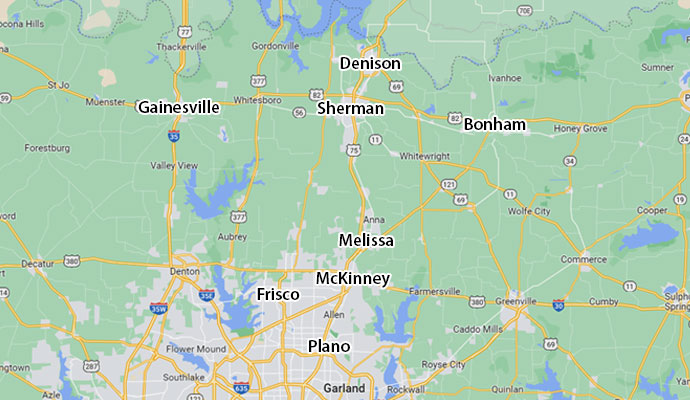24/7 Emergency Services
Drying Water-Damaged Contents in McKinney & Sherman, Texas
Water damage can occur in your home or business spaces due to heavy rain, floods, or leaking equipment. This standing water can damage your valuable property contents and structures if it takes a long time to get the restoration process started. Professionally assessing the water-damaged property is required for accurate estimation and insurance claims.
Whenever you need water, fire, storm, mold, or any other damage restoration services throughout the Dallas-Fort Worth Metroplex, count on Dalworth Restoration McKinney, a family-owned business for more than 48 years. After inspection, identification of water damage classification, and water extraction, we will proceed with the content drying process as part of our water damage restoration process.
tel:903-459-7774 /about-us/contact-us
Factors Influence Water Damage
Water damage during a disaster depends on the source and amount of water. Contaminated water, like sewage, causes more damage than the damage from burst pipes. Large-scale flooding requires expert repair, while small spills can be managed with DIY cleaning.
The duration of exposure to water is crucial, as quick action can mitigate damage, whereas prolonged exposure may lead to structural issues and mold growth. Additionally, porous materials such as drywall and carpet absorb water rapidly and are more susceptible to damage, which ultimately influences the severity of the water damage.
Taking these factors into account will help you determine the best course of action. To recover your damaged property during this difficult time, Dalworth Restoration McKinney is here to assist you in McKinney and Sherman.
Classification of Water Damage
Before initiating the water-damaged content drying process, a thorough assessment of water-damaged contents is essential. The restoration professionals will classify the water damage based on the source of water and the level of contamination.
Clean water from sources such as broken pipes or rainwater is classified as Category 1, posing minimal health risks. Category 2 water, containing contaminants like detergent or urine, may cause discomfort if ingested. Category 3 water, often from sewage backups or floodwaters, presents significant health hazards due to bacterial and microbial contamination.
Trust Dalworth for Premium Content Drying Process
Drying the water-damaged contents after severe water intrusion into your valuable property is part of the wider restoration process at Dalworth Restoration McKinney. After the completion of damage inspection, classification, estimation, water extraction, and the structure drying process, there comes the content-drying step. In this step, we do the following:
- Cleaning and Sanitization: Water-damaged contents are carefully removed from the affected area to prevent further damage and undergo the cleaning and sanitization process. This helps to remove contaminants, odors, and potential health hazards.
- Drying and Dehumidification: The IICRC-certified restoration experts use advanced equipment such as air movers, dehumidifiers, and heat drying systems to remove moisture from the water-damaged contents. This thorough drying process helps to prevent further mold growth.
- Monitoring and Evaluation: Throughout the drying process, restoration experts monitor the moisture levels, temperature, and humidity levels to ensure that all of the contents are dried properly.
The recovered things are ready to be given back to their owners after all the procedures have been finished. To prevent more harm, Dalworth professionals put efficiency, thoroughness, and safety first.
Challenges in Drying Damaged Contents
Challenges in drying water-damaged contents arise from various factors, complicating the restoration process:
- Time Sensitivity: Prompt response is crucial in large-scale events to prevent irreparable damage and mold development.
- Material Compatibility: Specific drying techniques are required for different materials, especially porous ones, to prevent further degradation.
- Mold Growth and Further Damage: Complete mold treatment is necessary to stop the development and potential health risks associated with mold growth in high-moisture areas.
- Structural Considerations: Water damage can compromise the integrity of the structure, requiring thorough evaluation and strengthening.
DIY vs. Professional Content Drying: What Is Best?
Choosing between a professional content drying service and a DIY method for water damage restoration depends on various factors. While DIY may work for small water occurrences and budget constraints, it usually lacks the knowledge, tools, and effectiveness of professional services. Content drying professionals offer expertise, specialized equipment, and full repair services, making them the go-to option for bigger or more complicated water damage cases.
It is best to choose the restoration professionals restoring your damaged property, as they are trained, licensed, and experienced. Let the certified experts from Dalworth Restoration McKinney stand beside you in this crucial time.
Trust Dalworth for Expert Content Drying Process in McKinney
An essential step in the repair of water-damaged materials is drying them off. Restoration experts from Dalworth Restoration McKinney can minimize losses and restore the affected area by using suitable drying procedures and effectively handling problems.
We are a family-owned business that has been in this industry since 1976 and is affiliated with Chubb, Liberty Mutual, and Chartis. Other than water-damaged content drying, we also provide water pipe break, flood damage, sewage removal & cleanup, appliance leak cleanup, and many other services in McKinney, Sherman, Allen, Plano, or anywhere throughout Collin County and Grayson County.
Call us now to get your desired service or book an appointment for expert consultation.










